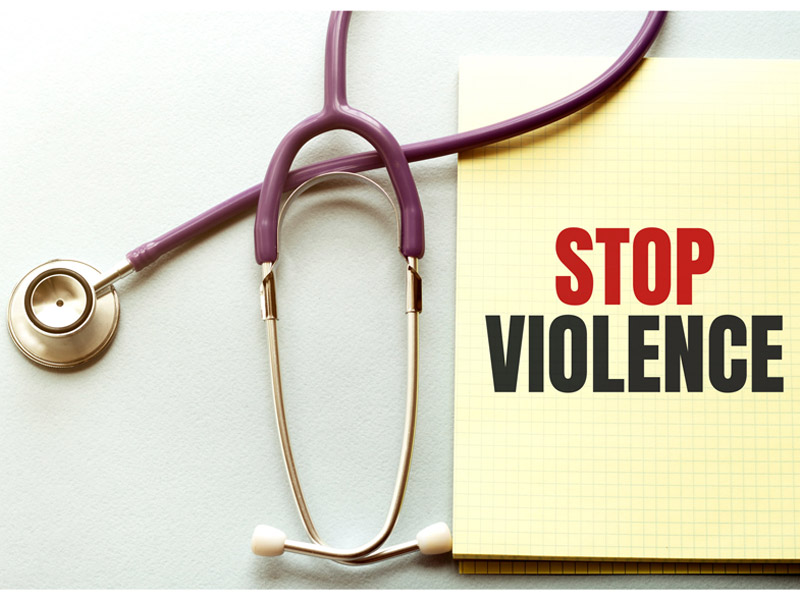AAFP Toolkit Addresses Violence Prevention in Health Care
New Resource Offers Tips, Tools and Training
August 26, 2021, 2:50 p.m. Cindy Borgmeyer ― It’s an unfortunate reality that too many family physicians have experienced some sort of violent encounter in their practice. Although the absolute number of fatal events remains, thankfully, relatively small, violent behavior directed against physicians and other health care professionals in the workplace ― whether in the form of verbal attacks or physical threats or assaults ― is a widespread and growing problem.

According to Bureau of Labor Statistics data for 2018, the incidence rate of serious workplace violence (i.e., incidents that required the injured worker to take days off to recuperate) was four times higher among workers in the private health care and social assistance industries than among workers in private industry on average.
With the number of violence-induced nonfatal workplace injuries and illnesses among health care workers rising steadily since 2011 ― and absent any sign that this trend is reversing ― it’s clear that medical practices and health care facilities must act to mitigate this threat.
The AAFP recognizes that need and has developed a comprehensive resource to help train health care team members and staff in family medicine practices to identify situations that often precipitate violence and respond accordingly.
“There are many family physicians who work in settings where this training is not as easily accessible, and the timeliness of this key resource continues to resonate for all physicians, regardless of their practice setting,” said Eleanor Lavadie-Gomez, M.D., a member of the AAFP Commission on Health of the Public and Science who has worked on the Academy’s position paper on violence and policy statement on harassment and bullying, both of which are included in the toolkit, as well as its position paper on violence in media and the entertainment industry. “The multifaceted struggles we are seeing during the pandemic also seem to lower the boiling point for rising tensions between individuals ― even in everyday situations.”
Story Highlights
Sparked by a resolution submitted to the Congress of Delegates, the Academy’s new Preventing Violence in Health Care Toolkit offers a carefully curated collection of educational resources gleaned from various trusted sources that covers all members of the care team, including
- step-by-step instructions for assessing and mitigating violence risk in health care settings,
- guidance for physicians and staff on setting up protocols for handling violent episodes in the clinic,
- a series of detailed strategies designed to de-escalate potential violence in the practice setting, and
- hands-on training tools for responding to active shooter incidents.
In addition, the toolkit highlights AAFP policy statements on various types and aspects of violence, whether perpetrated in health care facilities or in the community, and the role physicians play both in responding themselves and in educating patients and their families about this public health dilemma.
“This is an invaluable resource for members as the AAFP continues to provide support for family physicians who are living up to the mission statement of improving ‘the health of patients, families and communities by serving the needs of [its] members ...’,” Lavadie-Gomez told AAFP News. “AAFP members can expect to find a compendium of information that points to AAFP policy statements on the myriad forms of violence, but most importantly, information that family physicians can use in any practice setting for mitigating workplace violence.”
The Academy has for many years advocated that lawmakers and other government officials, regulatory agencies, and civic authorities recognize and act to end the epidemic of violence ― particularly gun violence ― that plagues the United States. Most recently, the AAFP praised preliminary actions the Biden administration has taken to curb gun violence, specifically calling out the “investment being made in evidence-based community violence interventions.”
Still, it’s important to understand that the rising tide of violence is a public health crisis that’s been years in the making, and it won’t be undone overnight.
“This toolkit was created as part of an ongoing effort to help protect us and our fellow physicians who make many sacrifices to care for our communities, whether large or small, rural or urban, private or academic,” said Lavadie-Gomez. “It is imperative that we continue to care for and protect one another.”